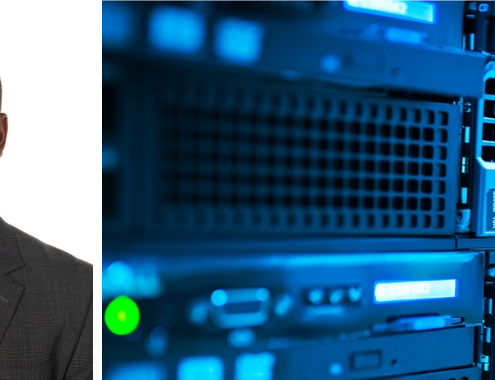As IT leaders continue to work through the challenges presented by the COVID-19 pandemic, CONVERGED is looking to bring insight and guidance to members. Today we’re sharing part one of a conversation we had with Sunny Arogunmati, VDI Principal Architect with Dell Technologies. In this part, Sunny describes the ways Dell Technologies is actively helping customers adapt to the needs of our current moment and his guidelines for maintaining business continuity while enabling a remote workforce.
CONVERGED: One of the biggest conversations right now surrounding the COVID-19 pandemic is business continuity. How is Dell Technologies addressing this challenge with VDI solutions?
SUNNY AROGUNMATI: When it comes to business continuity, a global pandemic is not the problem for which customers are most prepared. They’ve always prepared for data center and infrastructure destruction or natural disasters that could impact their physical IT footprint. Many corporations have spent their money on backups and have shunned remote workers, so they’ve pretty much shunned VDI as a priority for business continuity. But Dell is one of the few companies that has long ago introduced remote working internally and invested in remote working technologies such as VDI.
Dell has a turnkey-ready solution for VDI on all platforms, including VxRail, VxBlock, and XC Series. We’ve turned this into a single SKU called VDI Complete; essentially, a customer can request VDI Complete and it includes all the hardware and software packaged together. There are also “Ready Solutions” that are purpose-built and engineered for a particular workload. We have “Ready Solutions for VDI,” SAP, and Analytics.
In addition to that, we have produced several reference architectures for VDI applications (including Citrix) on all of our platforms. Customers can follow these reference documents for their own deployment and testing. We have also developed a great alliance with NVIDIA for our graphic solutions around healthcare, manufacturing, oil and gas, etc.
From a software or sustained productivity perspective, we’ve used VMware to enable workers to work from anywhere using any device as long as there’s a reliable internet connection. For example, in the medical field, we have applications that enable a doctor to access MRI scans or lab results from their tablet at home. All of this is made possible through VDI technology.
Next, we have the Dell Technologies Cloud, which makes it easier to extend the on-prem VDI to the cloud. For instance, most customers who have cloud services are using Azure or AWS, but they can’t really connect it to their on-prem. With Dell Technologies Cloud and VMware Cloud Foundation, customers can have their on-prem and extend it to the cloud. If you need to add capacity to the cloud, for example, with 600 desktops from Azure or AWS, that connection is already there.
CONVERGED: Is Dell Technologies doing anything specific to support customers right now?
AROGUNMATI: From a Dell perspective, we’re reformulating our VDI-pointed solutions to include COVID-19 needs. We know customers are looking for fast deployment, so we’re actively reaching out to them to understand how we can help. We’re also using the work-from-home model we’ve been using for over a decade as a way to provide some assurances that remote working as a norm is possible. Working from home is nothing new to us, so we want to share what we’ve done, how it’s changing, and provide a path for introducing those solutions. From a sales perspective, we’re telling our customers that working from home is a trend that may be here to stay.
In the corporate world, businesses are very good at spending money on yesterday’s problems, but we’re definitely learning new lessons in the age of COVID-19. For example, managers are learning that working from home is not as bad as they thought. Their employees are working more hours from anywhere, any day of the week, which leads to more productivity in some cases. Some employees are really liking that added flexibility.
Fast forward to after this pandemic, and I think more people will continue working from home. As a side effect, I think companies will think about reducing their real estate footprint because their in-office employees become fewer although their workforce continues to grow. If there’s no reduction in productivity with remote workers, why do you need to lease 10 floors of office space? This leads to a reduction in traffic congestion and environmental pollution, among other factors as well. I predict some employees will try to make working from home a permanent arrangement if they can, and we want to support customers who want to keep that option available.
CONVERGED: What scenarios optimize a faster or easier VDI deployment for an organization that needs to deploy ASAP?
AROGUNMATI: Well first, review and resize your current environment to the minimum configuration. This will free up space and allow you to provision space for VDI workloads today. If you look at VDI before it was a priority, IT leaders never really talked about it. Now it’s moving up the stack to become an essential service and I think this will continue growing even after this pandemic is over. Customers will have to reprioritize their workloads.
For example, if there are workloads you can shift to run at night or after business hours, you can use that space on the same hardware to run VDI workloads during production hours when everyone is online. Another path we can follow for customers who needed VDI yesterday is to add capacity via the cloud as a temporary solution.
CONVERGED: Is there a guideline for re-evaluating workloads to prioritize VDI?
AROGUNMATI: It depends—probably two of my favorite words ever. It will vary since production workloads will vary from one customer to another or from one industry to another. I would suggest prioritizing the business-critical workloads first. What needs to run during the day, during production time? What can run at night during non-production time when I can share the same hardware for different workloads?
The next step is to review the current hardware itself. Compute, storage, memory, network—can this take additional capacity for what I’m trying to do? Do I have enough storage for the VDI desktop itself? These are the kinds of questions we need to look at from a guidelines perspective.
This is the first part of a two-part series. For Part II, please click here.






